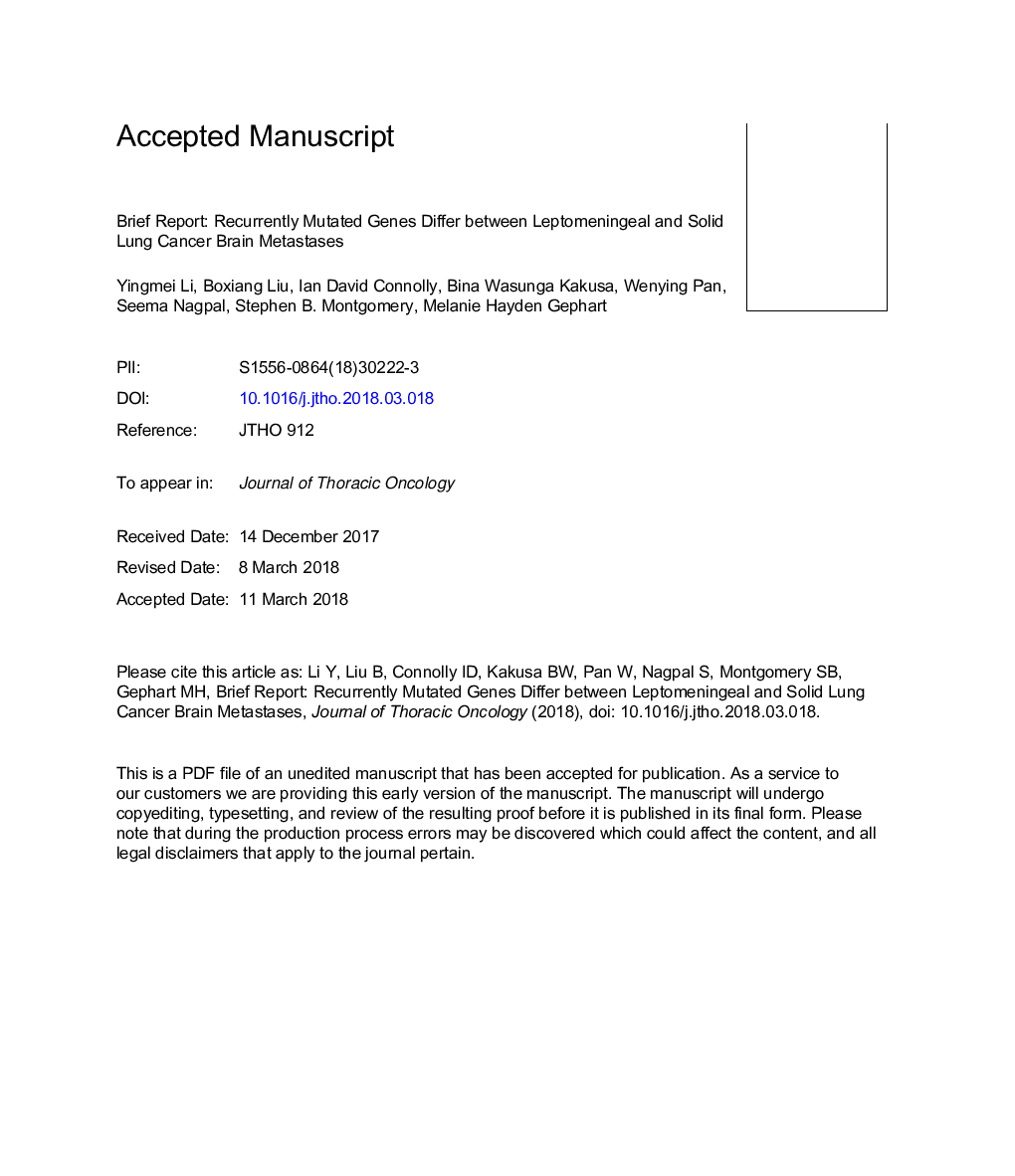| Article ID | Journal | Published Year | Pages | File Type |
|---|---|---|---|---|
| 8787582 | Journal of Thoracic Oncology | 2018 | 17 Pages |
Abstract
When compared with solid brain metastases from NSCLC, leptomeningeal disease (LMD) has unique growth patterns and is rapidly fatal. Patients with LMD do not undergo surgical resection, limiting the tissue available for scientific research. In this study we performed whole exome sequencing on eight samples of LMD to identify somatic mutations and compared the results with those for 26 solid brain metastases. We found that taste 2 receptor member 31 gene (TAS2R31) and phosphodiesterase 4D interacting protein gene (PDE4DIP) were recurrently mutated among LMD samples, suggesting involvement in LMD progression. Together with a retrospective review of the charts of an additional 44 patients with NSCLC LMD, we discovered a surprisingly low number of KRAS mutations (n = 4 [7.7%]) but a high number of EGFR mutations (n = 33 [63.5%]). The median interval for development of LMD from NSCLC was shorter in patients with mutant EGFR (16.3 months) than in patients with wild-type EGFR (23.9 months) (p = 0.017). Targeted analysis of recurrent mutations thus presents a useful complement to the existing diagnostic tool kit, and correlations of EGFR in LMD and KRAS in solid metastases suggest that molecular distinctions or systemic treatment pressure underpin the differences in growth patterns within the brain.
Related Topics
Health Sciences
Medicine and Dentistry
Oncology
Authors
Yingmei PhD, Boxiang MS, Ian David MS, Bina Wasunga BS, Wenying PhD, Seema MD, MAS, Stephen B. PhD, Melanie MD, MAS,
